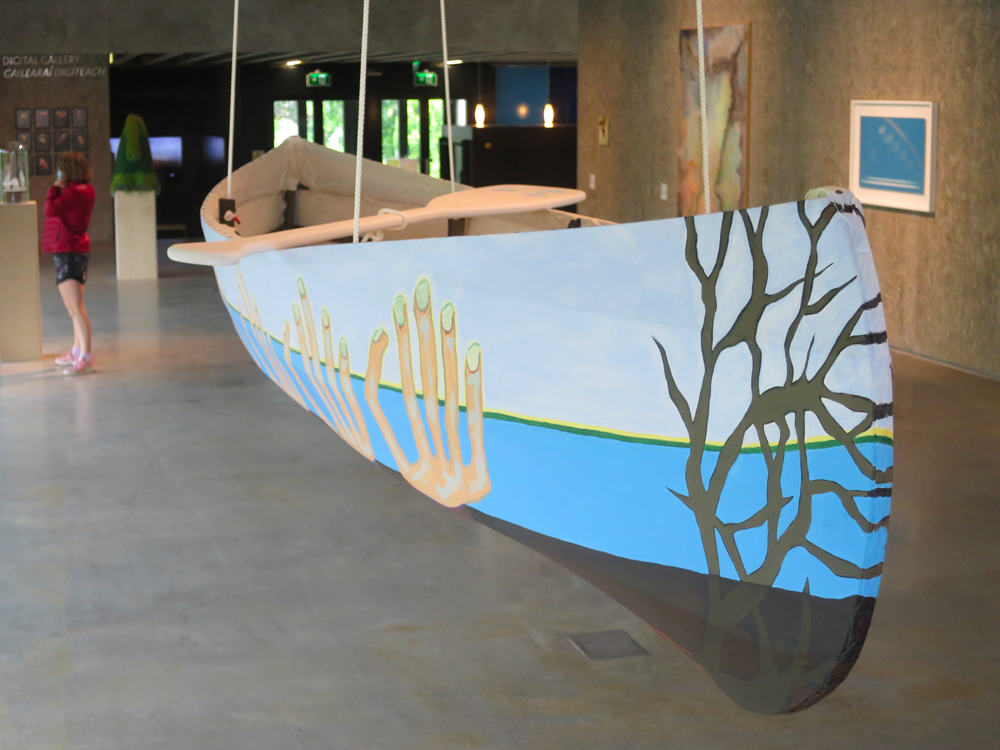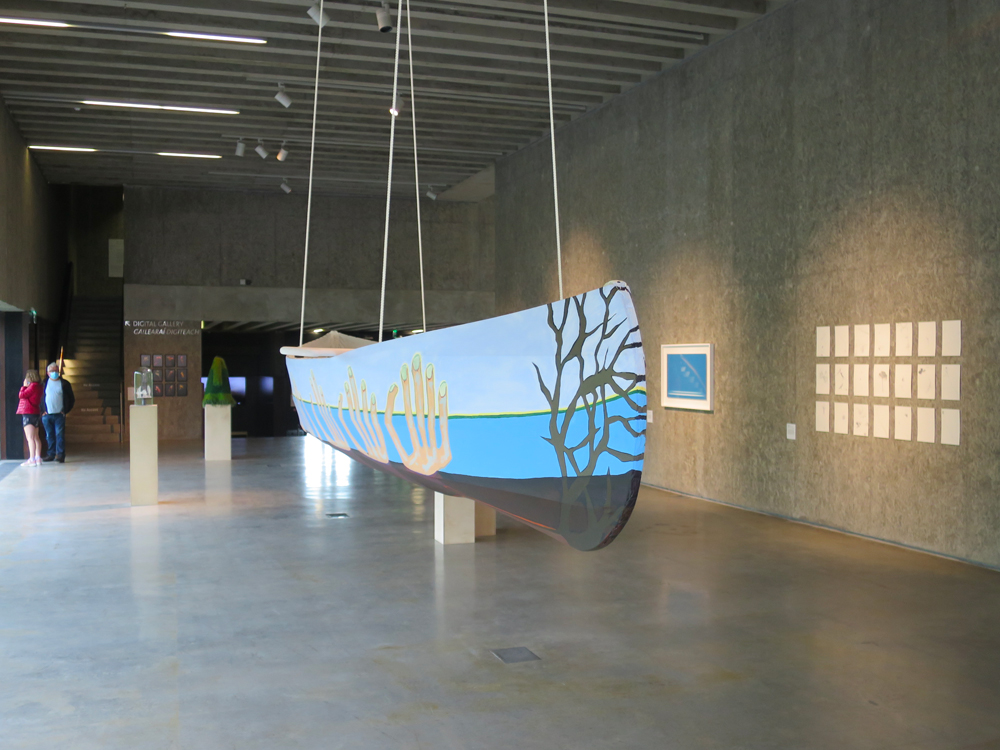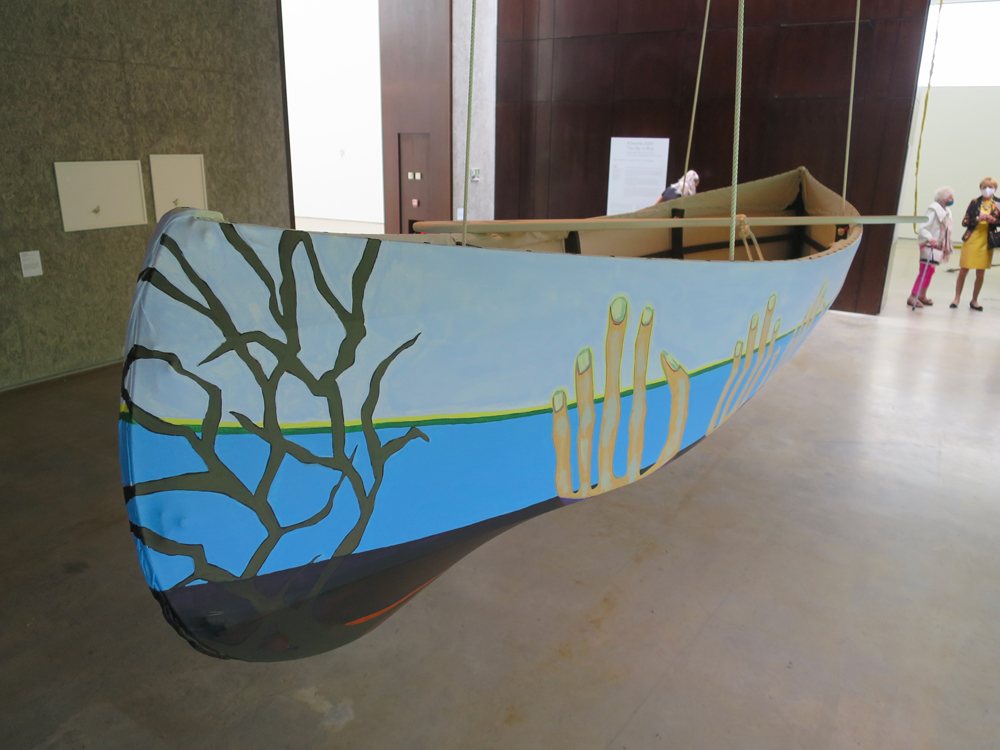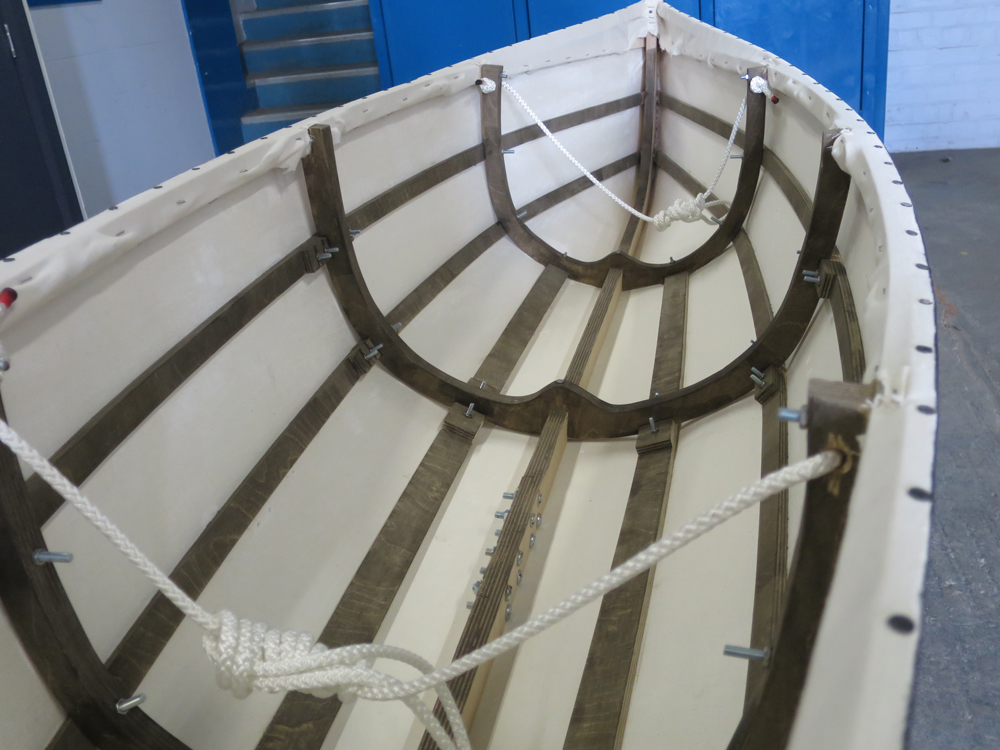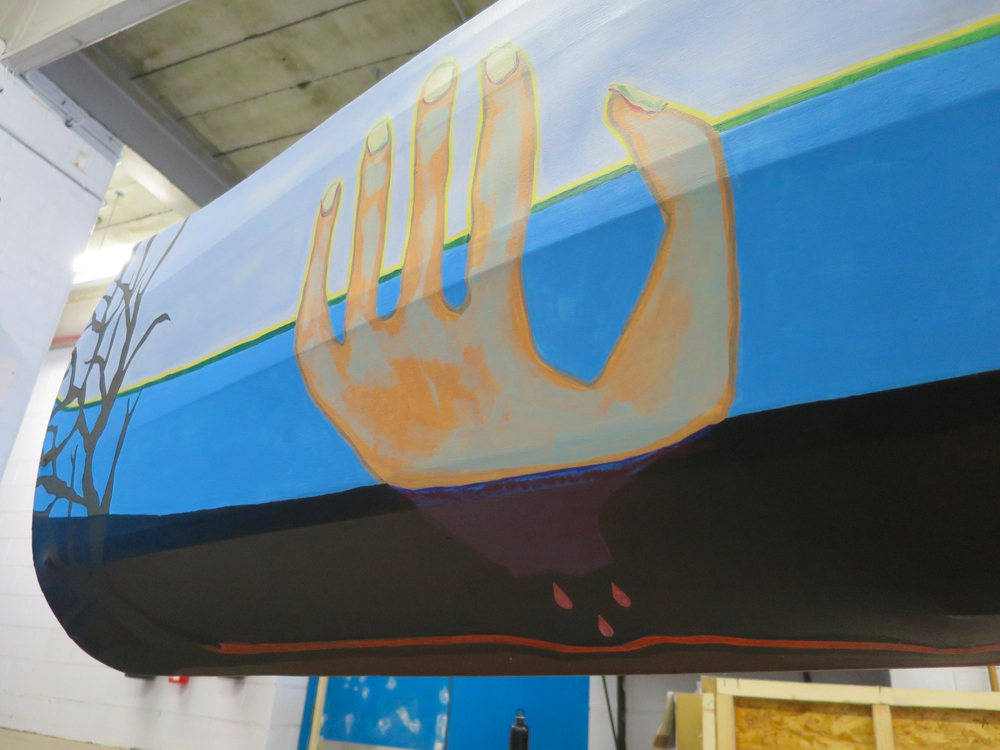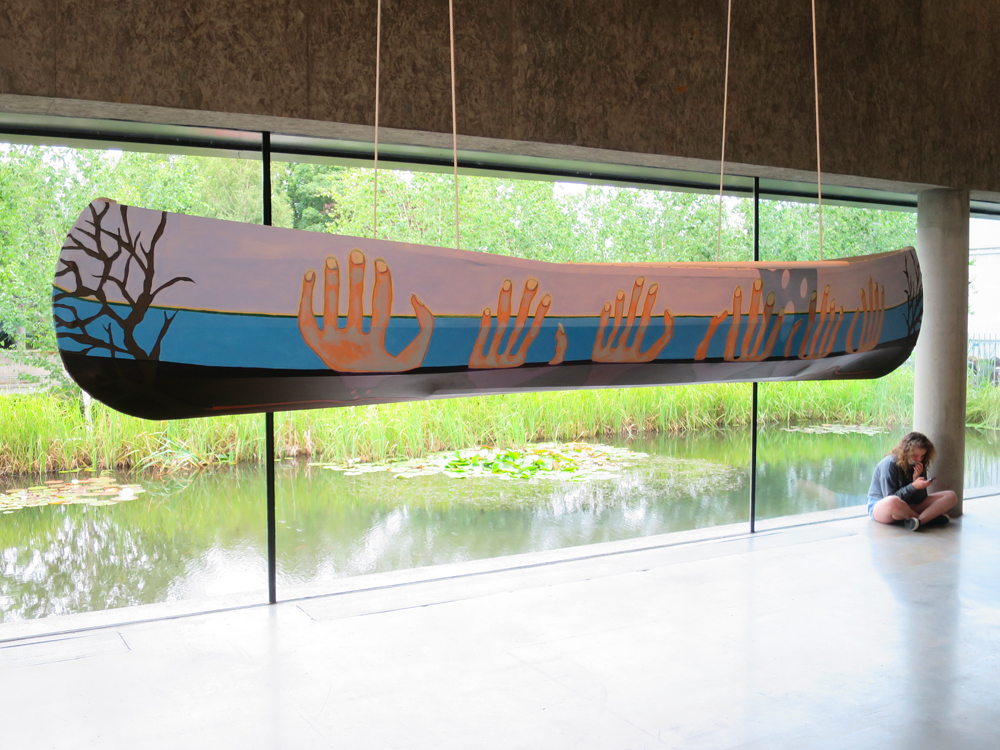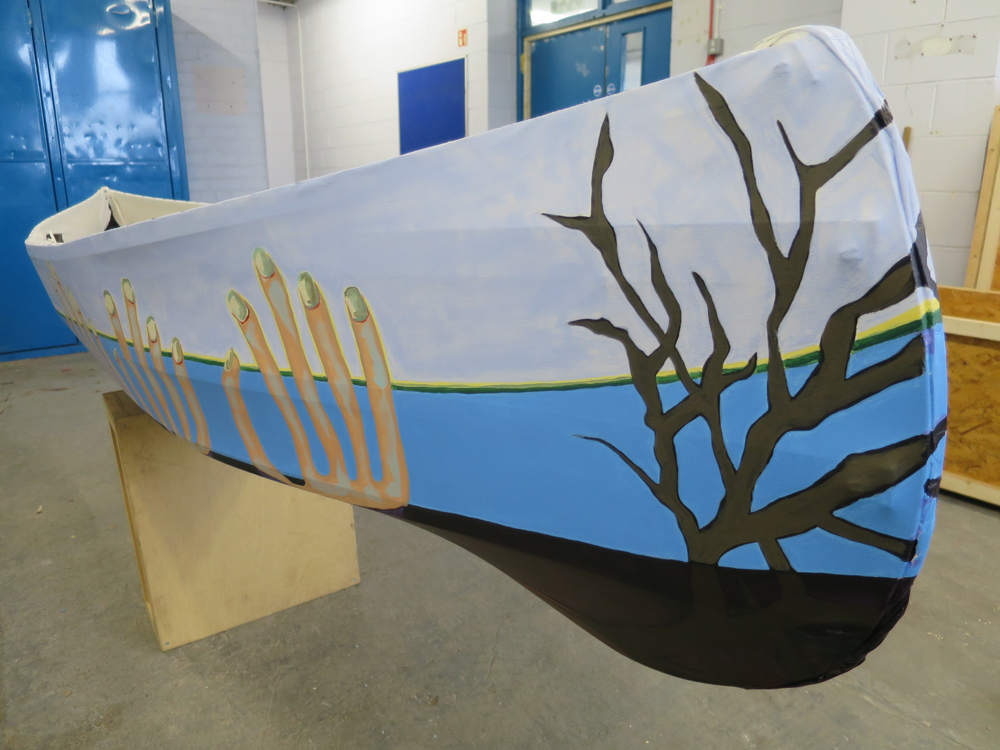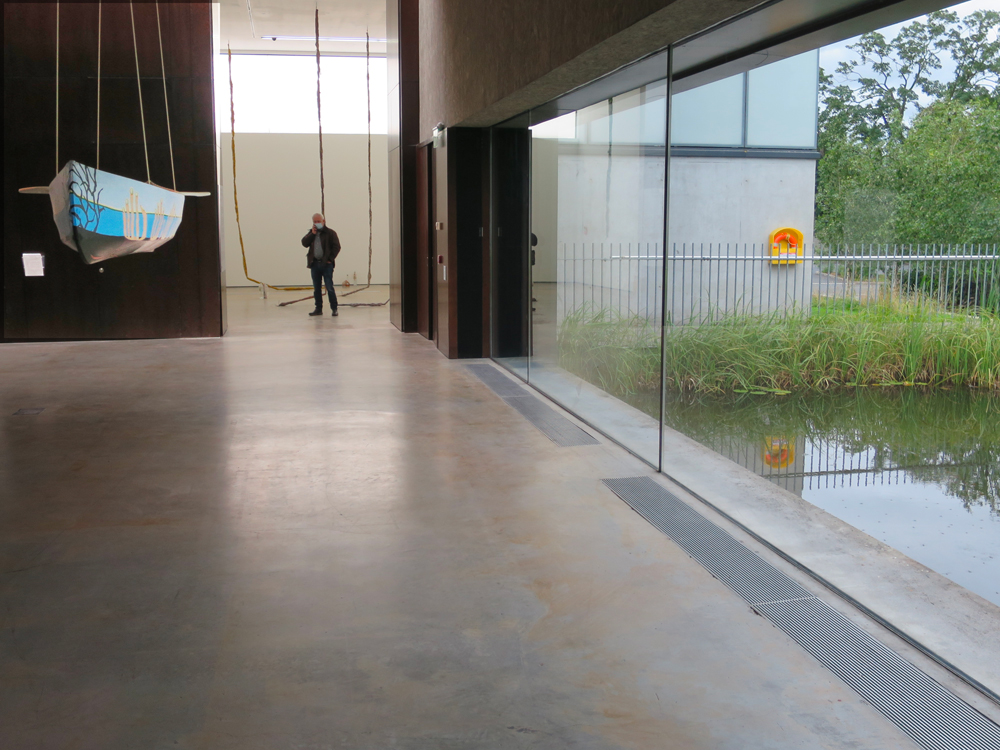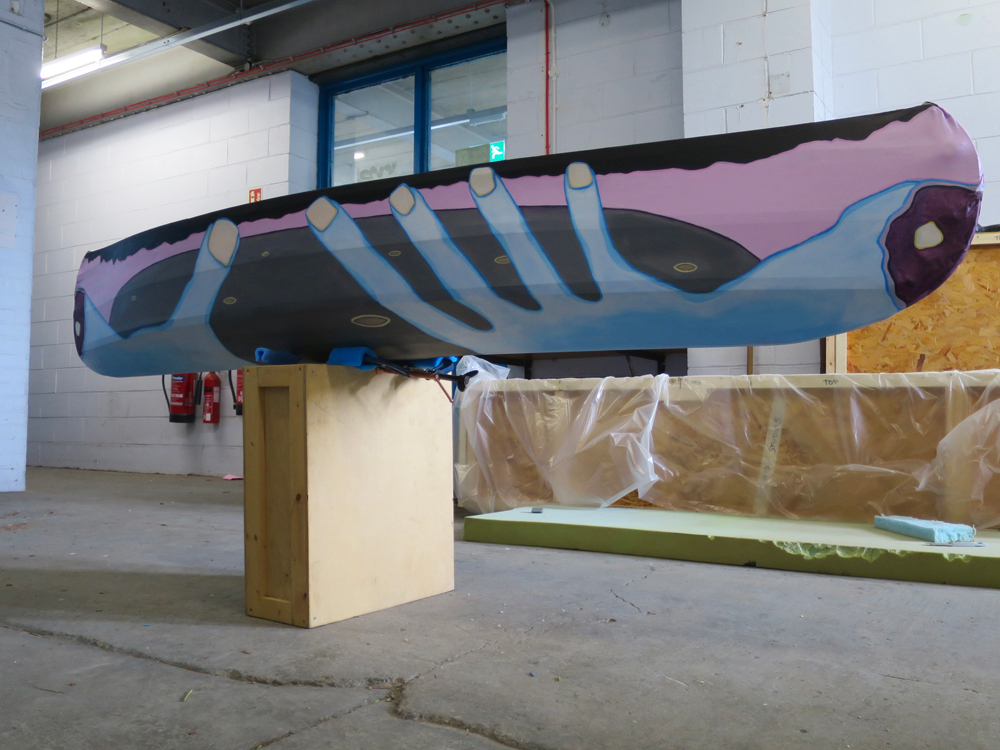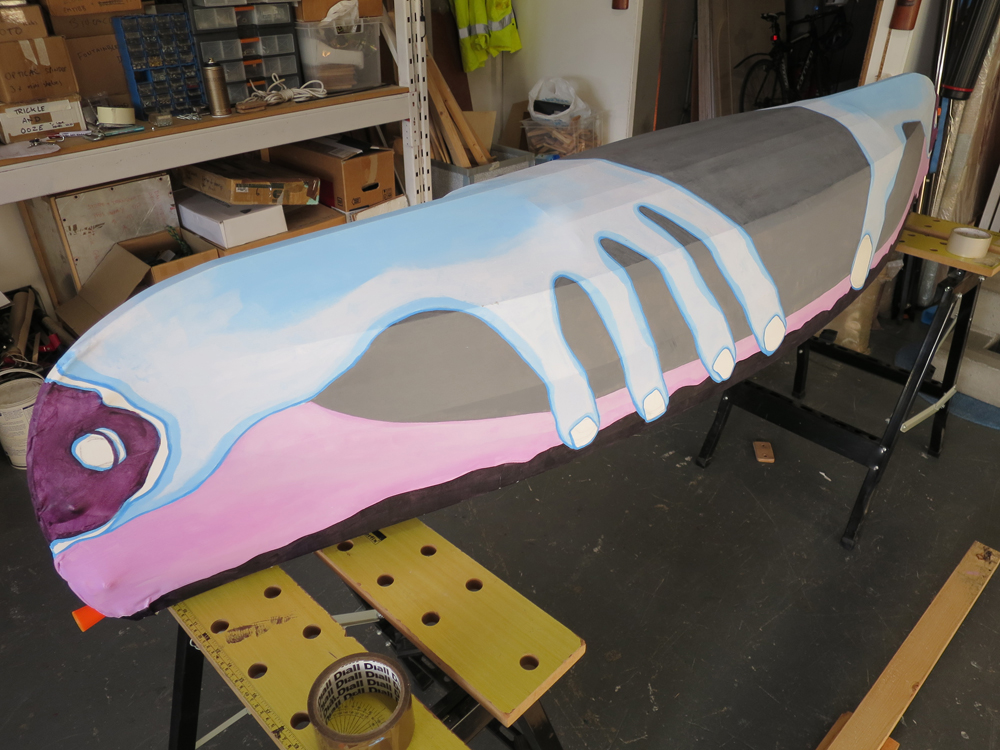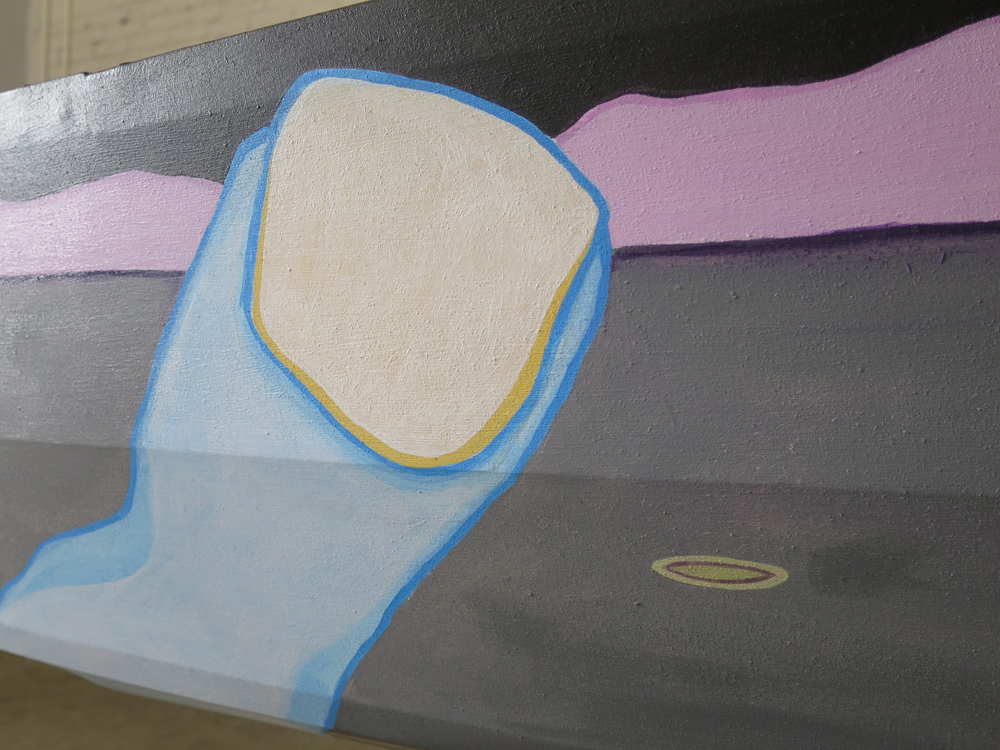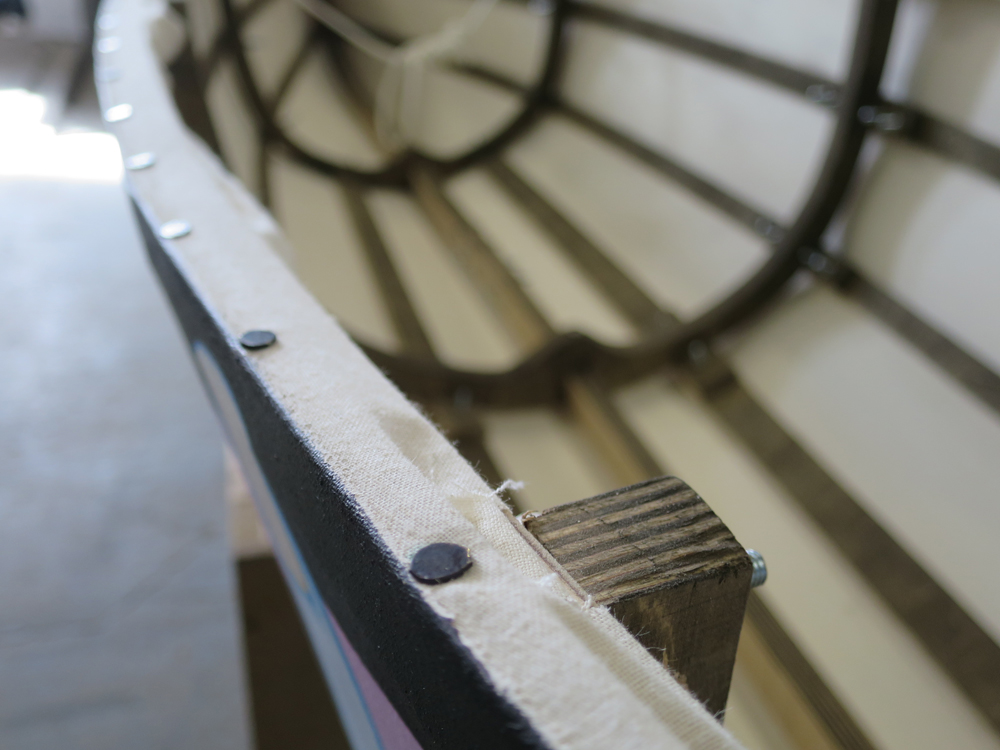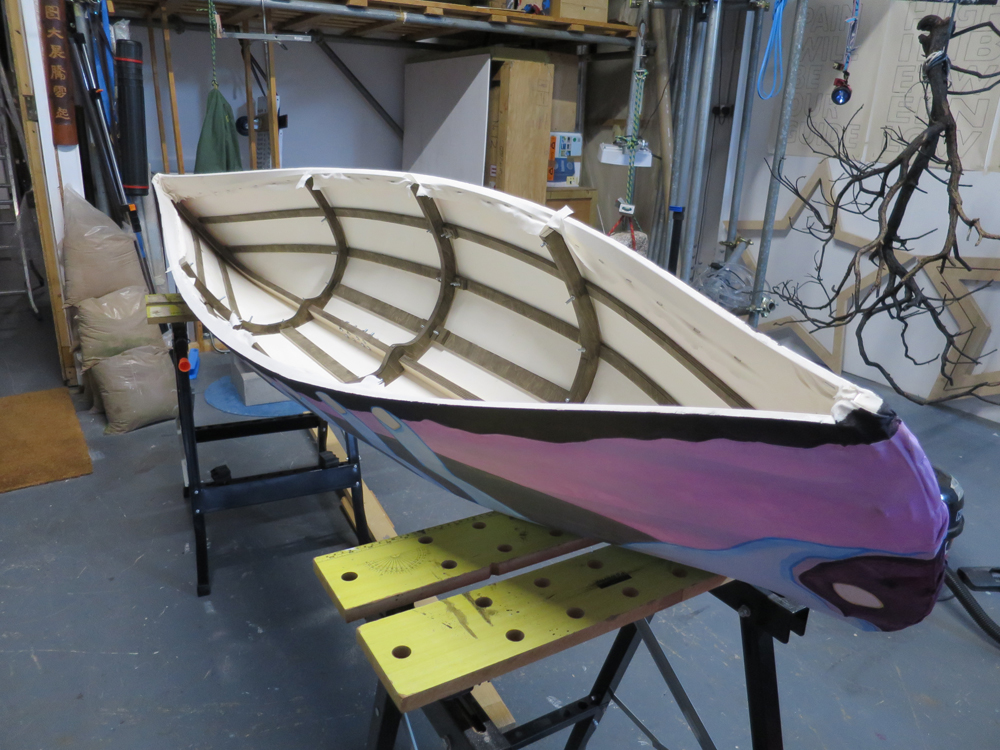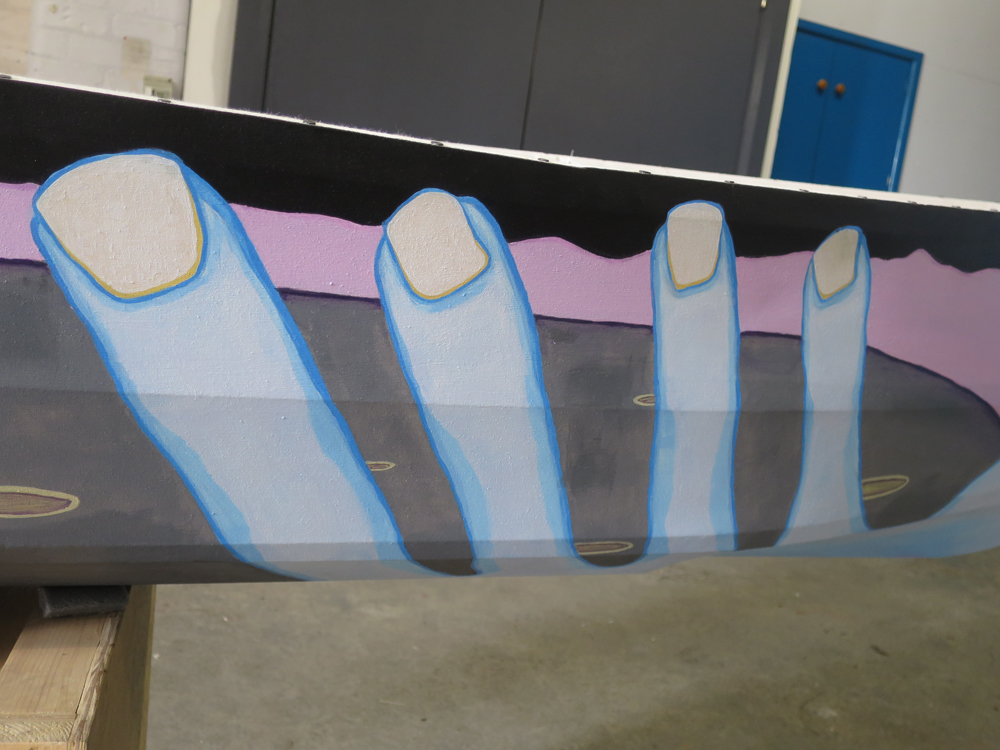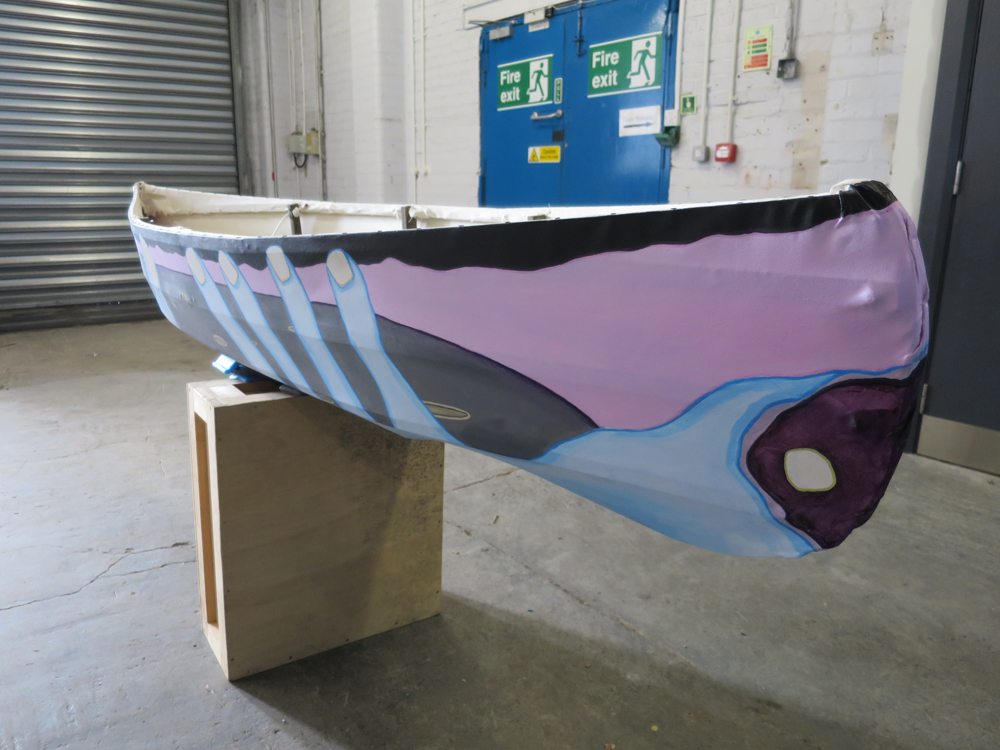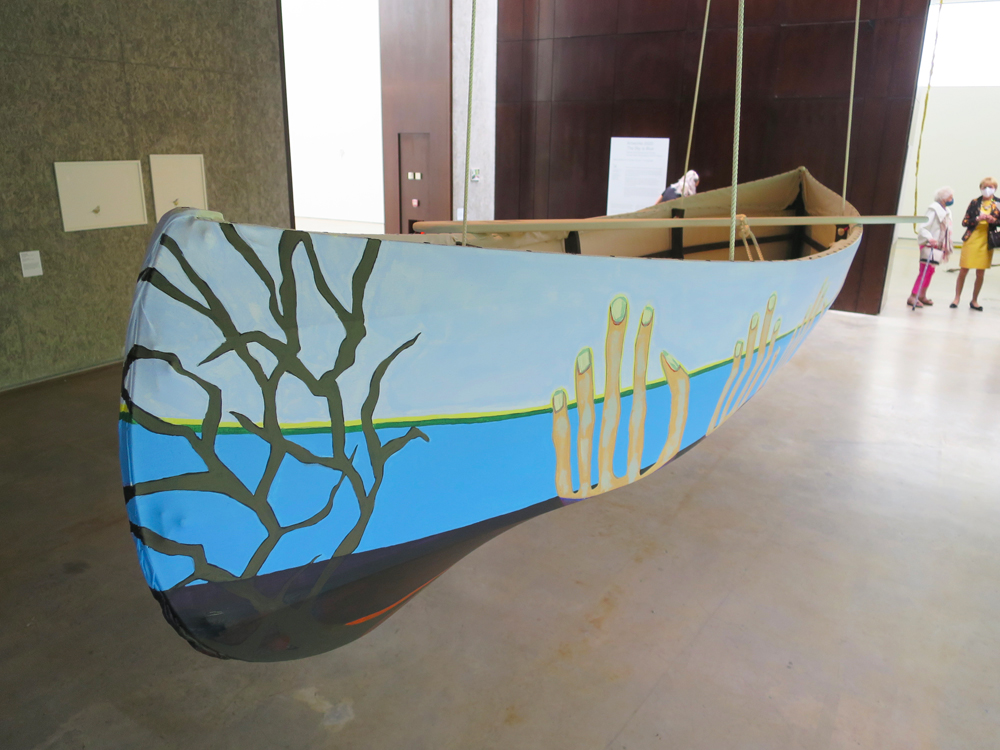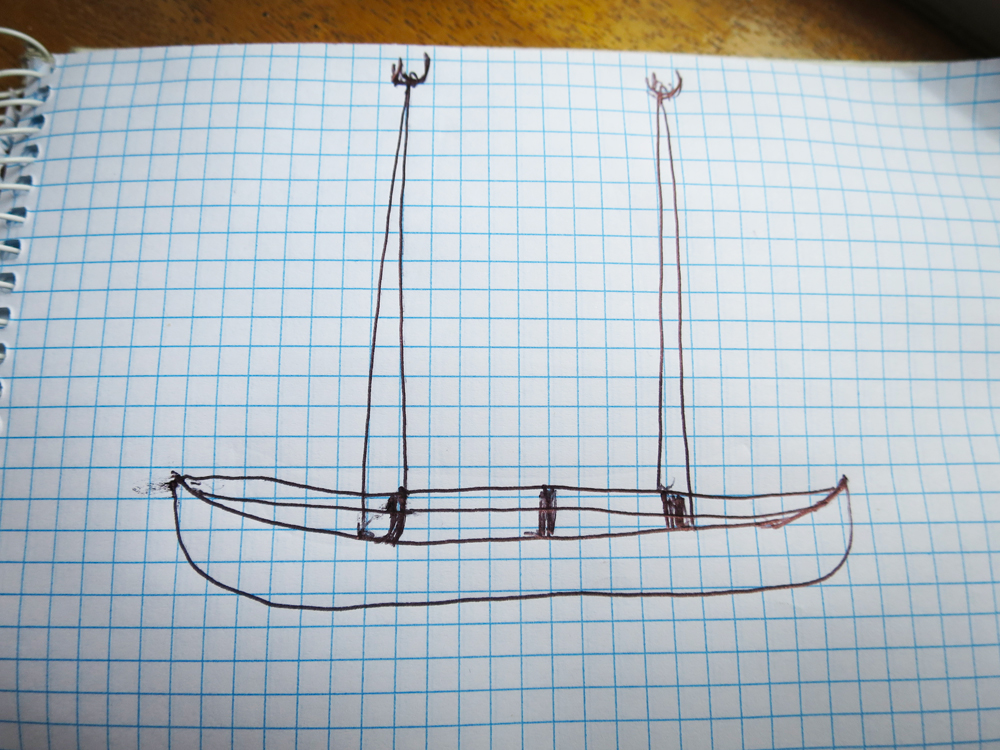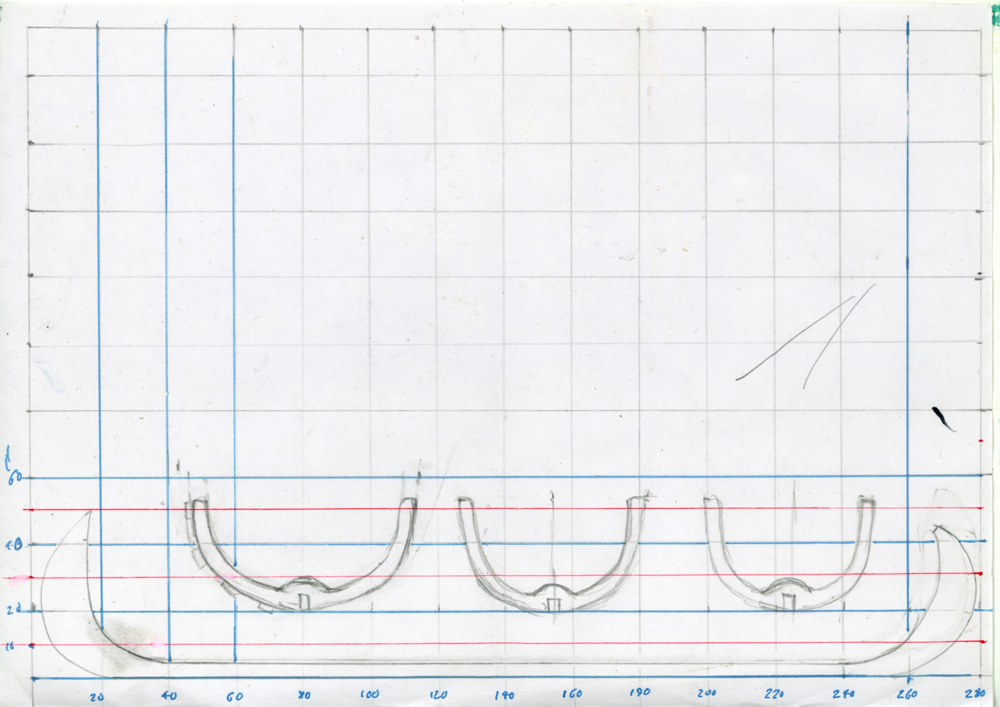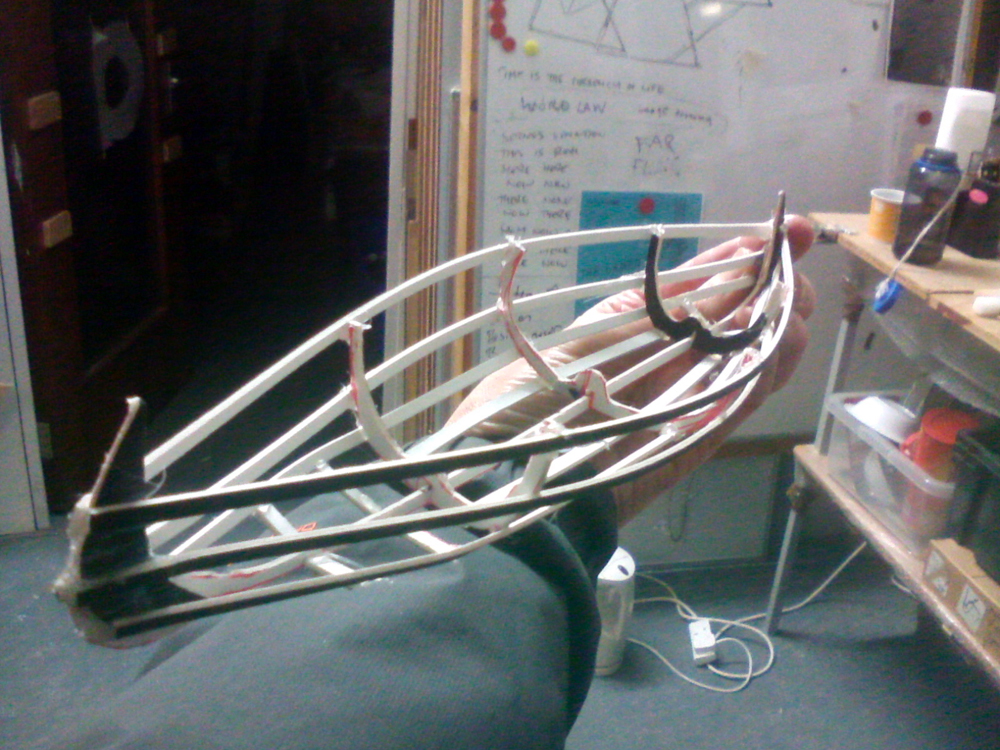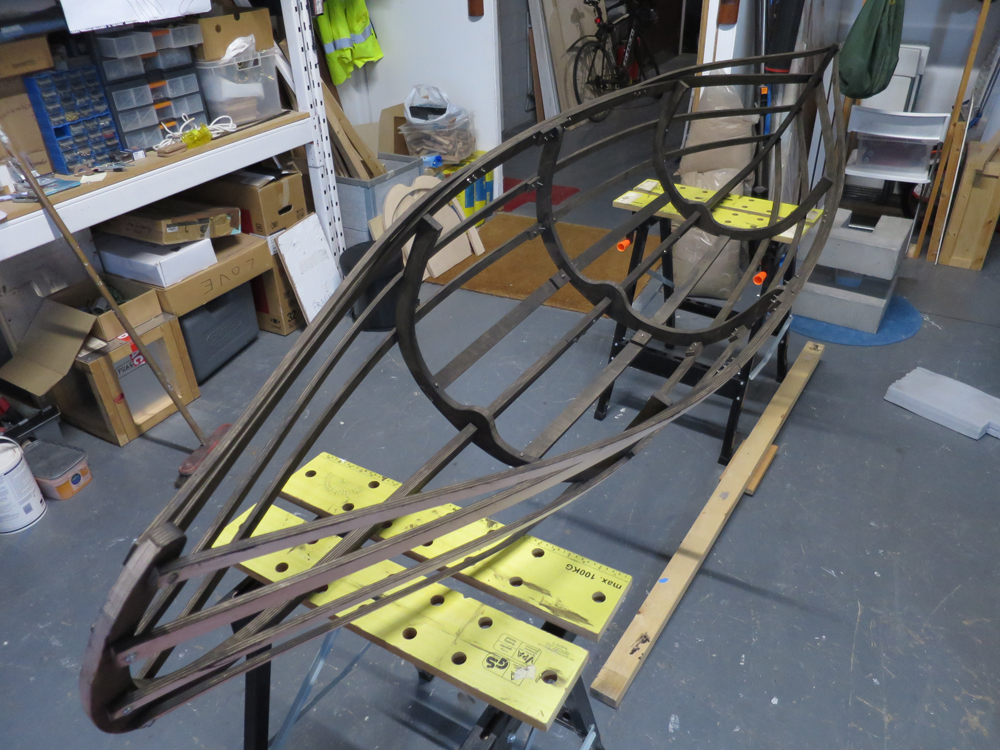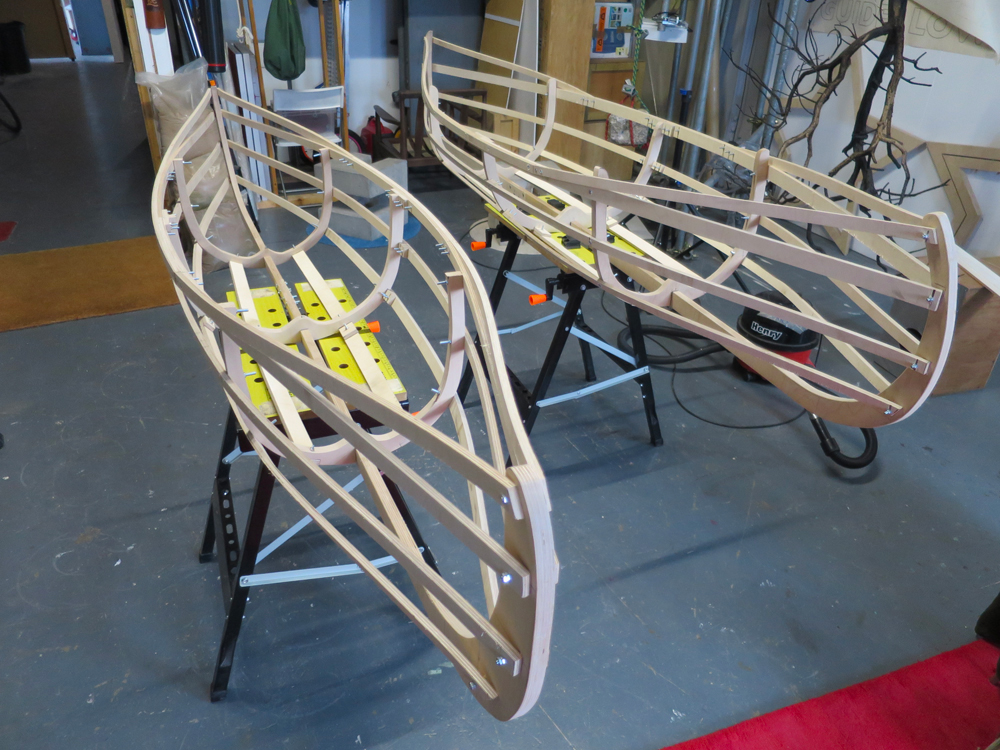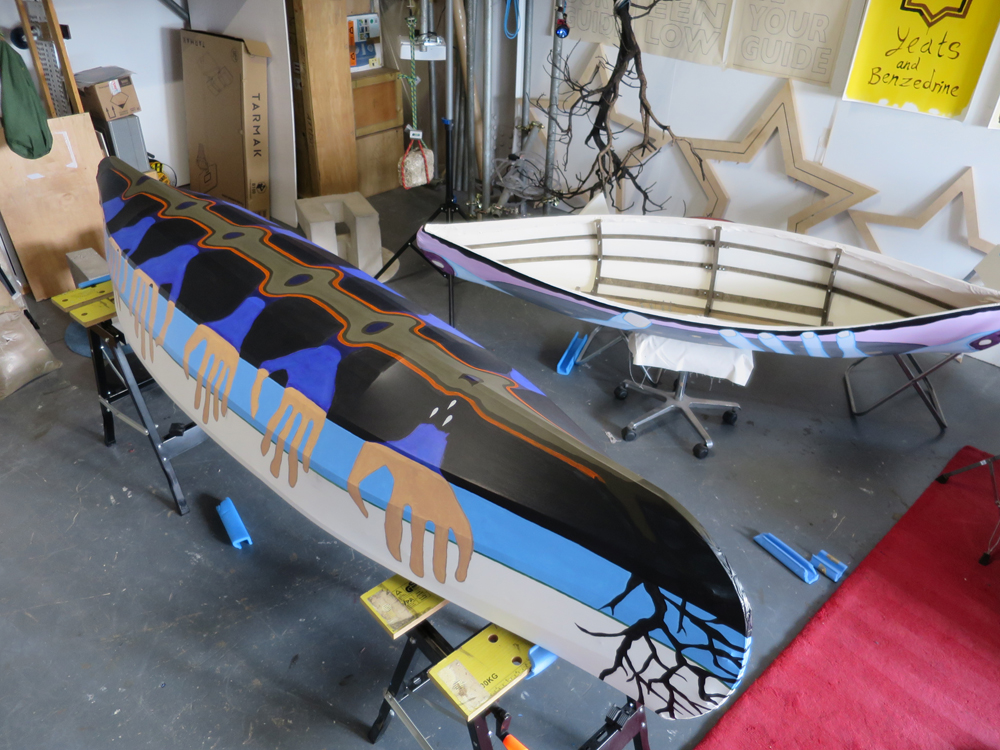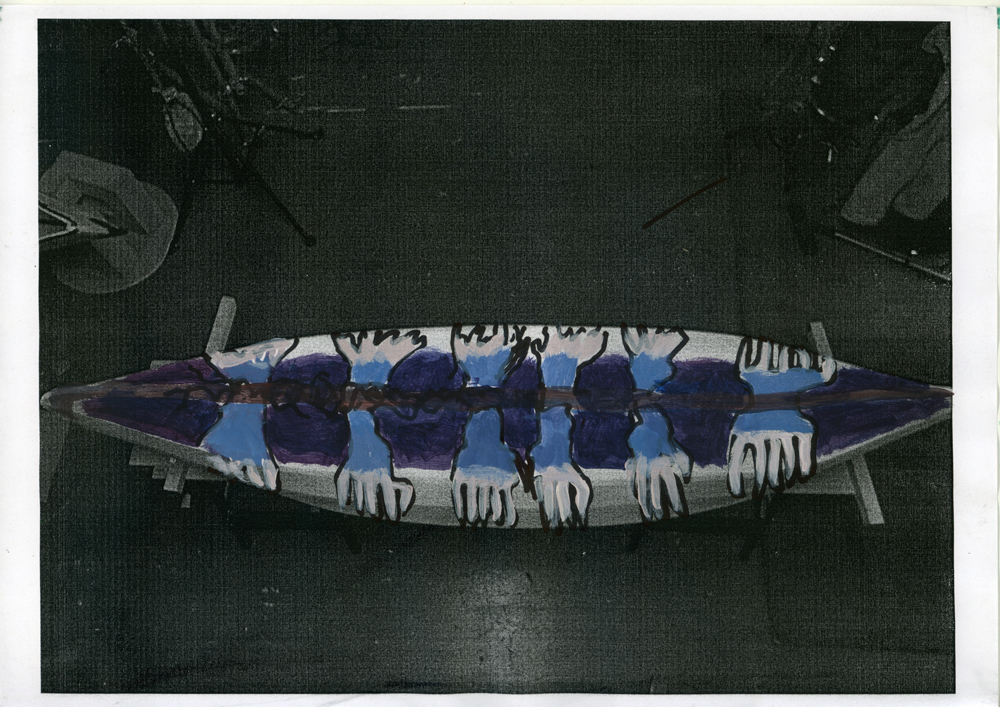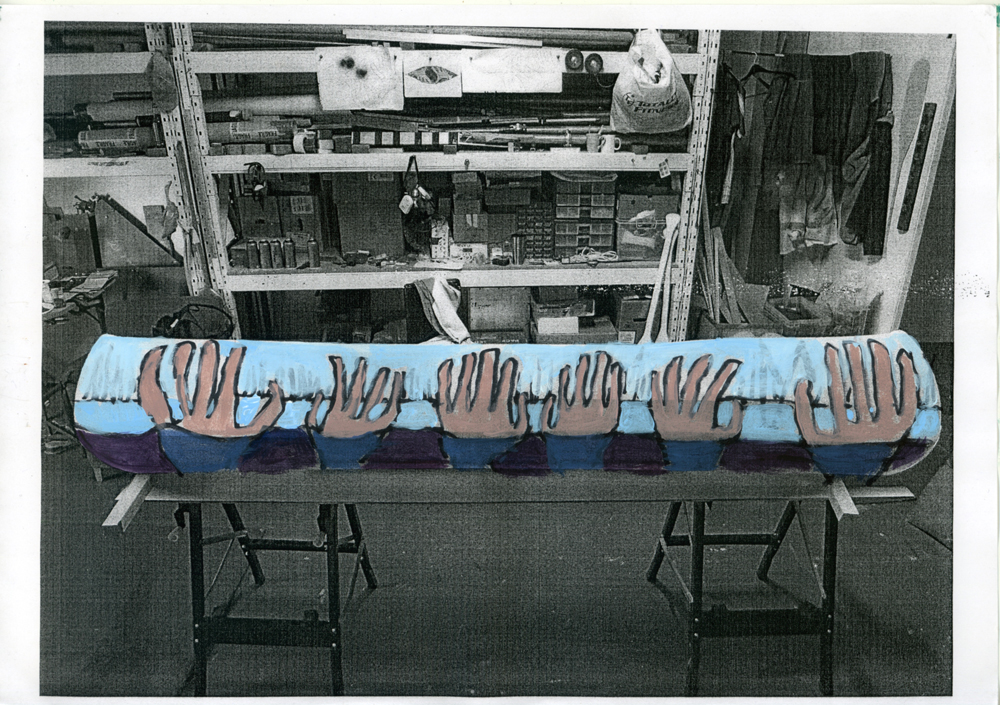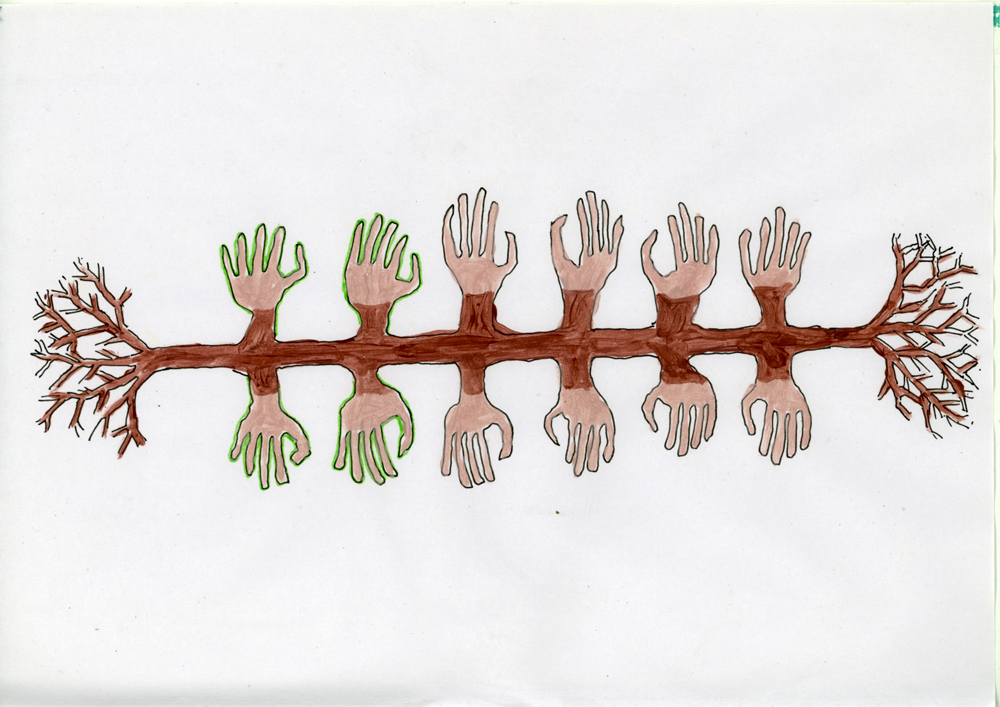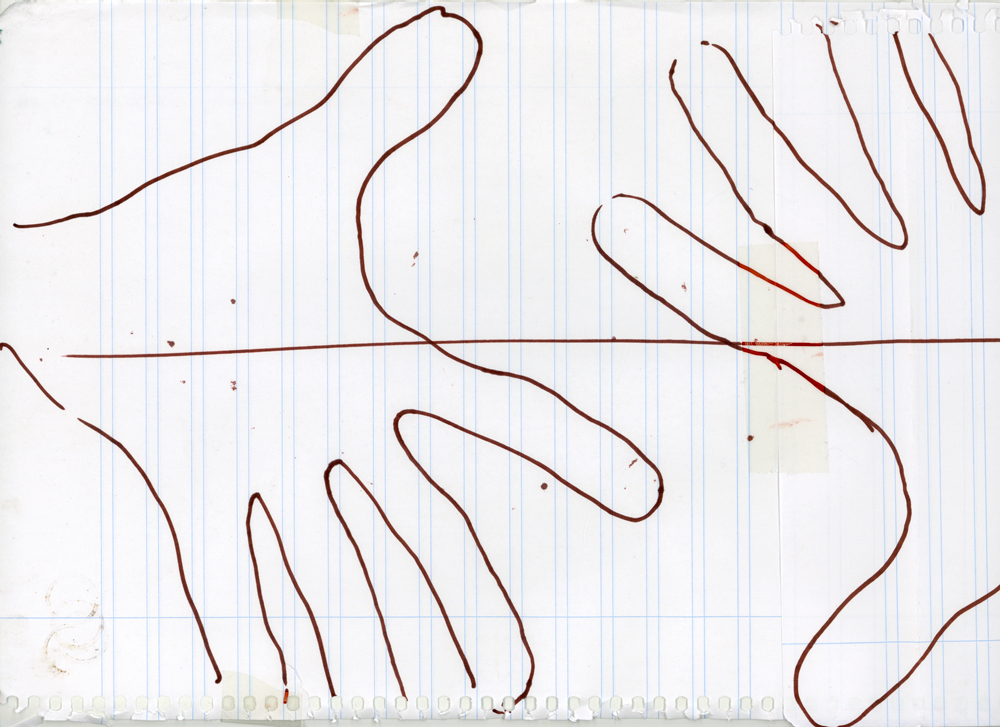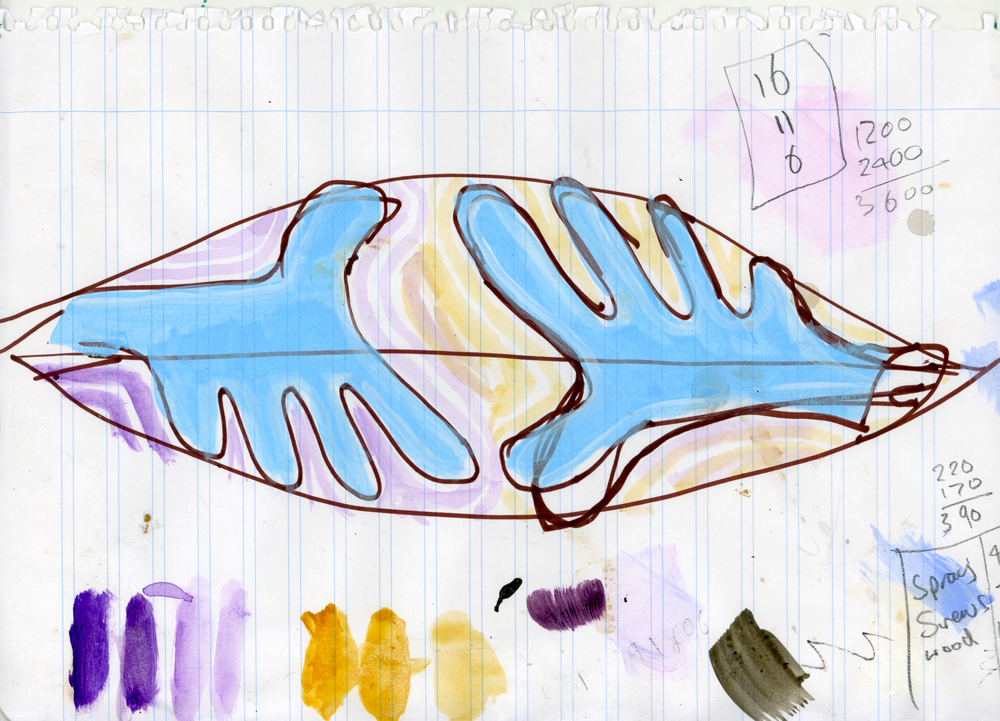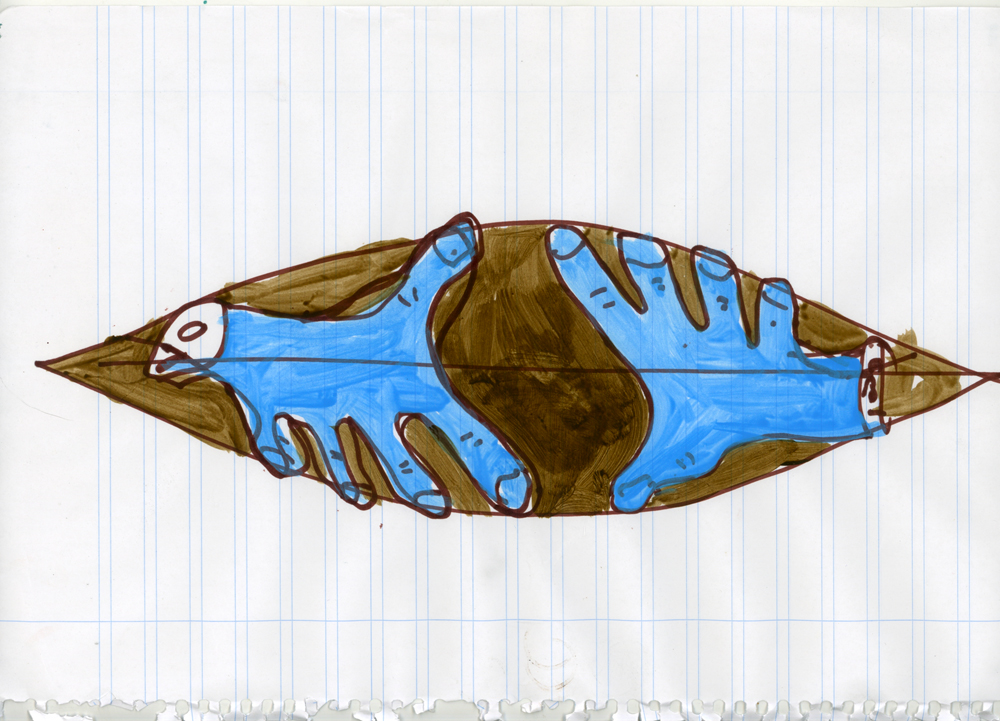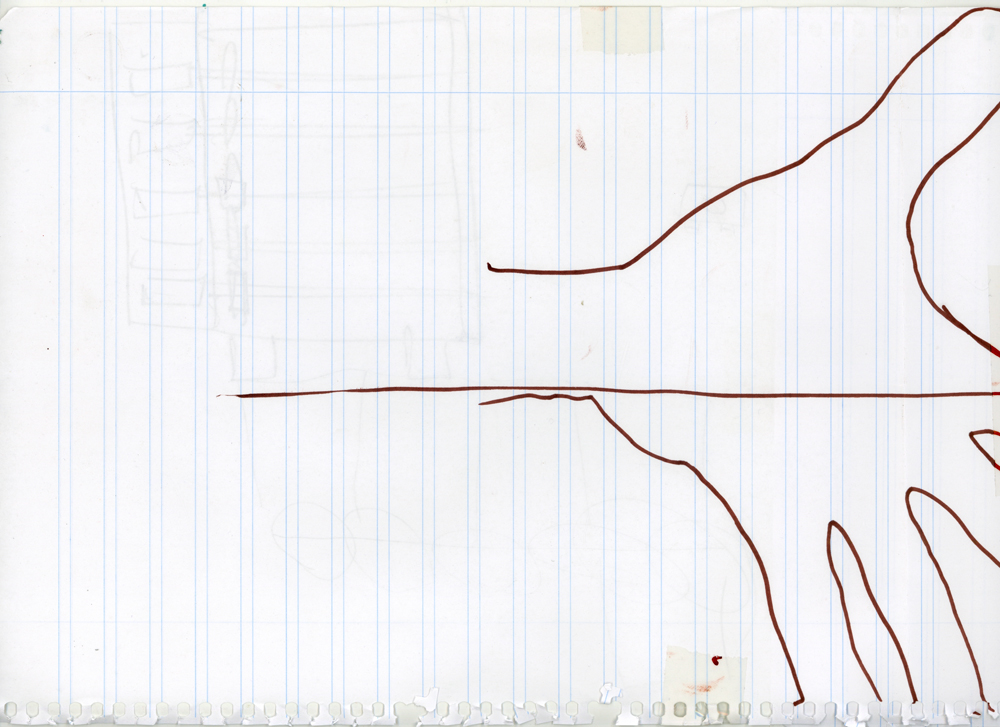NB: These are two art works we produced in the last year which were originally for a Shipsides and Beggs solo show in Washington DC at the Katzen Muesum in April 2020. The show unfortunately, was cancelled due to the COVID 19 crisis. The show titled, Another Fine Mess, explored a number of convergences between the historical, the cultural, the topological and the ecological around the issue of borders - with a particular starting point of the ROI / UK border. I will create more pages detailing the full show in due course - and will link all these things on the website.
Note these works are designed to hang in the air (via two rope loops attached to the frame) or via a wall attachment. In the Katzen Musuem it would have been possible to view them from above and below as there was a kind of atrium / mezzanine area.
These images are provisional - documentation of the work in progress and as it was packed into crates and also some images of one of the canoes in an exhibition at VISUAL in Carlow, Ireland (2020).
This canoe structure is Shipsides and Beggs’ own design based on a hybrid between a traditional Native American / Canadian canoe - a pioneer era canoe and a traditional Irish currach - a wooden frame over which material is stretched and painted. It’s one of two canoes made for the Another Fine Mess project.
These works are really paintings. Painted canvas on stretcher. Both paintings draw on geological, folkloric and historical sources encountered on the border.
Fingers grow gnarled in the watery pass
Shipsides and Beggs Projects
Acrylic paint on canvas on wooden frame.
2700 x 600 x 400mm.
Approx. 9kg.
2020
This is the larger of the canoe curragh paintings.
The structure is our own design based on a hybrid between a traditional Native American / Canadian canoe - a pioneer era canoe and a traditional currach - a wooden frame over which material is stretched and painted.
One short section of our canoe trip along various waterways along the border came to a secretive crossing place near Wattlebridge which is called Bloody Pass. I found a few good references to its naming in various sources. In Garrett Carrs' book he speaks about it, also from an archival parish reference and also there's a mention of the battle in the cafe at the Crom estate. I took Garrett's passage on it and re-edited it with the archival reference and made this text which my daughter is narrating for the Where the Lines End video:
The Bloody Pass got its name by swallowing up about five hundred men in 1689, during the Williamite War – a conflict arising when the English throne was taken from the Catholic King James by the Protestant King William. In England, this was a reasonably swift and bloodless change-over; it was in Ireland that the rending was felt. James’ reign had promised some freedom of religion, and so losing him was traumatic for Ireland’s Catholics. A force of James’ supporters were bombarding a castle nearby when an army of Williamites arrived and overwhelmed them, shouting phrases that would be repeated for centuries to come, “No Popery”, “No Surrender” – terms that disallow compromise or even discussion. The Jacobites were chased to the shore edge of a narrow section of Lough Erne where they had a secret ford, marked by twigs set into the shallow pass. However, a traitor had cut down the twigs and the pass could not be found and there - they were shot, hacked to death or drowned. The ford then, was not found, although one description claims the slaughter itself created one, with the bodies of the dead filling the watery pass. Another description claims that their blood coloured the water so much that the spot has been called the Bloody Pass ever since. Only one Jacobite soldier made it across - perhaps clambering over the bodies of his comrades, or maybe a good swimmer - nimble enough to shed his equipment before leaping in. He escaped the future north and came ashore in the future south. The narrowest section of the Bloody Pass is now concreted over, creating a land-pass across which you must to drag your boat over in order to cross the border.
So, the section of waterway is blocked over now - but passable with a bit of trespassing. But paddling the heavily overgrown section up to the passage and then away once through was quite spooky knowing that in the shallow depths were the bodies of hundreds of men who now have become part of the ecological makeup of the terrain. And it is shallow - and the water a peaty orange - where the reeds and plants grow out of you can imagine limbs and finger reaching out. So, I wanted to paint a motif of hands reaching up - with the hands kind of holding the canoe (as in the second canoe too - see below) in a both supporting and threatening kind of way. Being held afloat or in peril by the past. I also wanted a kind of connection between the plants grow and the human hands. Of course, they are slightly horrible zombie hands and of course one of them, at the bows of the canoe (the O'Neill red hand legend) is severed from the plant root spine that connects them.
Icy hands hold us afloat
Shipsides and Beggs Projects
Acrylic paint on canvas on frame.
2350 x 500 x 350mm.
Approx. 8kg.
2020
This is the smaller of two canoe paintings. They are really paintings (canvas on wooden stretcher) - although if I worked over the surface with a more robust waterproofing paint (bitumen / tar paint is what is used on currachs) they would function fine in the water.
The canoe idea came from a few sources - as we explored the ROI / UK border we realised much of it was on water - so we borrowed a canoe and paddled sections of it - uncovering / encountering all kinds of natural and human history and folklore. Also we also figured the connection between the pioneering of American, much of which would have utilised canoes and also the Native American/Canadian use of the canoe - especially on the North West Coast - where the waterways were better known and cultured than the land.
Also, my dad was a boat builder - small wood and fibreglass sailing dinghies and the occasional fibreglass canoe. When I was young I spent a lot of time around his workshop - the workshop where he lost three fingers to the circular saw. This one also refers in a way to the glacial processes that formed the loughs and islands in Fermanagh - with the Ulster folkloric traditions of severed digits and hands and giants.... I liked the idea of being carried over the water by dysfunctional malevolent / benevolent giants - so I painted the hands to cradle the structure of the canoe.
Images of the work in construction and development below...
